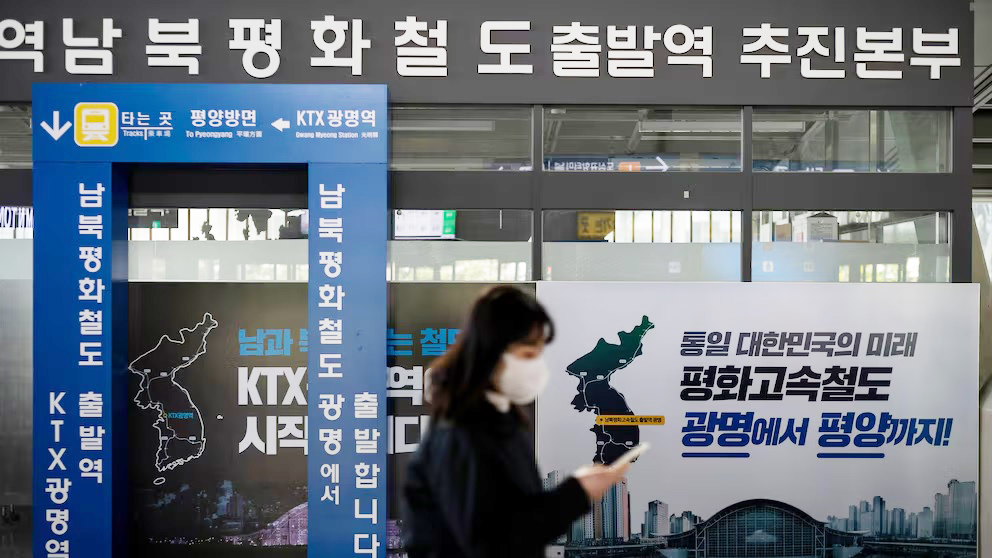
There are two Koreas, North and South. But there’s also more than one South Korea, with the nation split into camps with polar opposite views on the danger posed by the nuclear-armed neighbor to the north.
This division in South Korean sentiment has lasted through a tumultuous history of war, dictatorship, poverty and, in recent decades, head-spinning though unevenly distributed economic growth. Differing views on North Korea are now sharper than ever, influenced — or not — by Pyongyang’s repeated vows to attack South Korea and its buildup of nuclear-capable weapons.
Spend some time in South Korea and you will see reminders everywhere of North Korea’s potential nuclear menace — and the contrasting ways residents read Pyongyang’s actions.
Older people and conservatives often have more unease about North Korea than liberals and younger people. But a sweeping generalization isn’t possible. Many young people are also afraid. And some older people who have spent their lives hearing angry warnings from North Korea feel no fear at all.
Relations with North Korea often improve with liberal South Korean governments eager for dialogue, and plummet with conservative leaders like the current hard-line president. A tough stance in Seoul usually means Pyongyang stages more weapons tests, as happened on Thursday, and issues more bellicose statements, which leads to frenzied South Korean media coverage. During the previous liberal government, North Korean leader Kim Jong Un had summits with then-South Korean President Moon Jae-in, which set up meetings between Kim and former U.S. President Donald Trump.
Many in South Korea discount the nuclear peril as hollow because of a simple truth: Aside from occasional deadly skirmishes, the North hasn’t backed up its vows to use its weapons in a full-scale attack on the South. Still, for South Koreans paying attention to the whiplash speed of North Korea’s nuclear and missile development, there is plenty of distress.
The Associated Press interviewed and photographed dozens of South Koreans to explain this unique, fragmented perception of the nation’s biggest rival, North Korea.
“Kim Jong Un might really use a nuke,” said Kim Jaehyun, a 22-year-old undergraduate law student. “North Korea could really attack us out of the blue.”
He stockpiles a bulletproof vest and other military gear in the event of a war. While many South Koreanshis age know little about national defense policies, Kim attends North Korea security seminars and reads articles on war scenarios.
Kim links his worries, in part, to the day in 2022 when, while serving as an infantryman along the border, he heard that Pyongyang had flown a drone into South Korean territory, breaking an inter-Korean military agreement.
“There needs to be at least one person like me who can raise how dangerous” North Korea is, Kim said. “People just take the looming threats too lightly. It’s like they see the knife coming closer to them but never think the knife could stab them.”
That’s not the case for Shin Nari, who can quickly quantify her worry about nuclear war.
“Number-wise, from 1 to 10, I would say 8. … I take it very seriously,” said Shin, 34, a master’s student at the University of North Korean Studies in Seoul. A war could happen anytime, she says. “In a few seconds, we could just blow up here.”
Shin’s bookshelves are filled with North Korea-related topics, and her goal is to work for her country as a policymaker. She has a small stockpile of bottled water and canned goods in case of a nuclear attack. “It makes me satisfied that I could live at least 14 days, maybe a month.”
South Koreans have long been divided on North Korea.
Here are some facts: The North attacked the South in June 1950, five years after Soviet and American forces split the Korean Peninsula in half at the end of World War II. The end of the Korean War in 1953 resulted in an uneasy cease-fire. This means that the Korean Peninsula, separated by the world’s most heavily armed border, is still technically at war.
Much of the unease in the South is linked to the nuclear bombs.
North Korea has been building its nuclear program for decades, but it started in earnest in the 1990s. Over the years, through on-again, off-again disarmament negotiations, the North has conducted a barrage of missile and nuclear tests. The goal is an arsenal of accurate, long-range nuclear-capable missiles.
There are still technical issues the North needs to master, but the development of such an arsenal may only be a matter of time. Pyongyang is estimated by some experts to currently have as many as 60 warheads.
Many believe Kim Jong Un won’t risk war because the United States-South Korea military alliance would respond with overwhelming force, obliterating the North’s leadership. But there are growing questions in South Korea about the U.S. commitment to back up its “nuclear umbrella” protecting the South, with repeated polls showing that more than half want Seoul to build its own nukes.
Two experts who regularly visited North Korea — former senior U.S. intelligence official Robert Carlin and Siegfried Hecker, former director of the Los Alamos National Laboratory — argued at the beginning of this year that Kim had “made a strategic decision to go to war,” creating a situation on the Korean Peninsula that’s “more dangerous than it has been at any time since early June 1950.”
